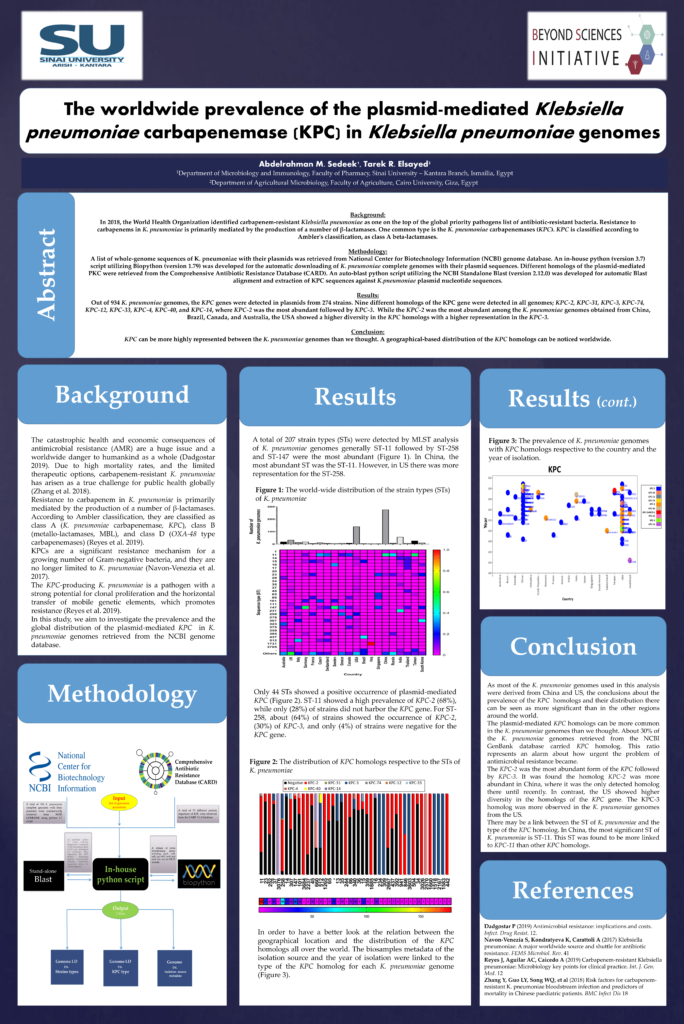Abdelrahman M. Sedeek
Conference 2023 Presentation
Project title
The worldwide prevalence of the plasmid-mediated Klebsiella pneumoniae carbapenemase (KPC) in Klebsiella pneumoniae genomes
Authors and Affiliations
Abdelrahman M. Sedeek1, Tarek R. Elsayed2
1. Department of Microbiology and Immunology, Faculty of Pharmacy, Sinai University – Kantara Branch, Ismailia, Egypt
2. Department of Agricultural Microbiology, Faculty of Agriculture, Cairo University, Giza, Egypt
Abstract
Background
In 2018, the World Health Organization identified carbapenem-resistant Klebsiella pneumoniae as one on the top of the global priority pathogens list of antibiotic-resistant bacteria. Resistance to carbapenems in K. pneumoniae is primarily mediated by the production of a number of β-lactamases. One common type is the K. pneumoniae carbapenemases (KPC). KPC is classified according to the Ambler’s classification, as class A beta-lactamases.
Methods
A list of whole-genome sequences of K. pneumoniae with their plasmids was retrieved from National Center for Biotechnology Information (NCBI) genome database. An in-house python (version 3.7) script utilizing Biopython (version 1.79) was developed for the automatic downloading of K. pneumoniae complete genomes with their plasmid sequences. Different homologs of the plasmid-mediated PKC were retrieved from the Comprehensive Antibiotic Resistance Database (CARD). An auto-blast python script utilizing the NCBI Standalone Blast (version 2.12.0) was developed for automatic Blast alignment and extraction of KPC sequences against K.pneumoniae plasmid nucleotide sequences.
Results
Out of 934 K. pneumoniae genomes, the KPC genes were detected in plasmids from 274 strains. Nine different homologs of the KPC gene were detected in all genomes; KPC-2, KPC-31, KPC-3, KPC-74, KPC-12, KPC-33, KPC-4, KPC-40, and KPC-14, where KPC-2 was the most abundant followed by KPC-3. While the KPC-2 was the most abundant among the K. pneumoniae genomes obtained from China, Brazil, Canada, and Australia, the USA showed a higher diversity in the KPC homologs with a higher representation in the KPC-3.
Conclusions
KPC can be more highly represented between the K. pneumoniae genomes than we thought. A geographical-based distribution of the KPC homologs can be noticed worldwide.

